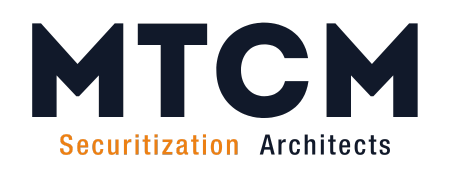Securitization is a financial process that has transformed the way assets are bought, sold, and managed in the global market. By converting assets into marketable securities, it offers a plethora of opportunities for originators and investors alike. This article delves into the intricacies of securitization solutions, exploring its mechanisms, benefits, and the challenges it faces.
What is Securitization solutions?
Securitization is the procedure of pooling various types of contractual debt such as mortgages, car loans, or credit card debt obligations and selling their related cash flows to third-party investors as securities, which may be described as bonds, pass-through securities, or collateralized debt obligations. This process is pivotal for improving liquidity and funding diversification in financial markets.
The Process of Securitization solutions
The securitization process involves several key players and steps. Originators initiate the process by pooling assets. Structuring involves the assembly of these assets into tranches, catering to different investor risk appetites. Issuance is the phase where these securities are offered to the market. Lastly, investors purchase these securities, providing the liquidity back to the originators.
Types of Securitized Assets
Securitized assets can vary widely, from mortgage-backed securities (MBS), which are secured by home loans, to asset-backed securities (ABS), backed by personal property, and collateralized debt obligations (CDOs), which are backed by a pool of various assets. Each type offers unique risks and returns.
Benefits of Securitization
For originators, securitization provides a way to free up capital and reduce risk exposure. Investors benefit from securitization through access to a broader range of investment opportunities and the ability to choose securities that match their risk and return preferences.
Risks and Challenges of Securitization
While securitization offers many benefits, it also comes with risks such as credit risk, prepayment risk, and liquidity risk. These risks require careful management to avoid significant financial losses.
Regulatory Framework of Securitization
The regulatory landscape for securitization has evolved significantly, especially after the financial crisis of 2007-2008. New regulations aim to improve transparency, reduce systemic risk, and protect investors.
Case Studies of Securitization Solutions
Examining both successful securitization deals and those that have failed provides valuable lessons for stakeholders in the securitization market. These case studies highlight the importance of due diligence, risk assessment, and regulatory compliance.
100 million Real Estate Development in downtown Miami:
A Miami-based Real Estate Developer was looking to finance a real estate project to start the construction phase.
- Institutional investors were interested in participating in the project – with a view to eventually buying the property once finished and fully rented out – to diversify their fixed-income portfolio.
- MTCM successfully set up a compartment via a Luxembourg SPV and issued a bond bearing an international ISIN number. Investors were able to invest in the project which will be classified as a Fixed Income Investment.
15 million EUR Repackage of Outstanding Loan for tax efficiency:
A Spanish Airplane Company had an outstanding Loan of USD 10 million to non-EU Investors Loan bearing a 9.50% interest rate per annum, 5-Year Maturity.
- The Investors were residents in a country lacking double-taxation agreements with the borrower’s jurisdiction so they would receive the net interest of 7.22% instead of 9.50% (Withholding Tax 24%).
- MTCM successfully assigned the loan to an SPV with Luxembourg jurisdiction, and at the same time, the SPV Issued a note based on the conditions of the loan, and investors could buy the note without being penalized by the withholding tax.
Future of Securitization solutions
Advancements in technology and changes in market trends are shaping the future of securitization. Innovations such as blockchain and AI have the potential to streamline processes, enhance transparency, and mitigate risks.
Securitization remains a vital part of the global financial ecosystem, offering both opportunities and challenges. By understanding its nuances, stakeholders can navigate this complex landscape more effectively, leveraging securitization for growth and stability.


